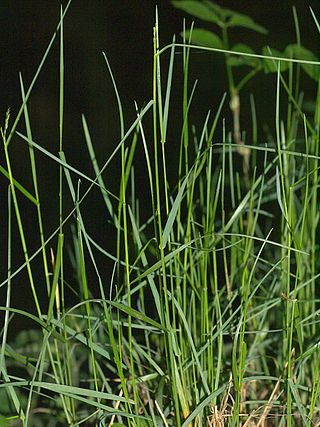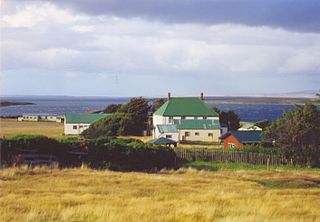
Poa is a genus of about 570 species of grasses, native to the temperate regions of both hemispheres. Common names include meadow-grass, bluegrass, tussock, and speargrass. Poa is Greek for "fodder". Poa are members of the subfamily Pooideae of the family Poaceae.

Poa annua, or annual meadow grass, is a widespread low-growing turfgrass in temperate climates. Notwithstanding the reference to annual plant in its name, perennial bio-types do exist. This grass may have originated as a hybrid between Poa supina and Poa infirma.

Poa nemoralis, the wood bluegrass, is a perennial plant in the family Poaceae. The late-growing grass is fairly nutritious for livestock, which feed on it in the autumn, and it is used as a lawn grass for shady situations.
Leonard Rodway was an English-born Australian dentist and botanist.

Ozothamnus is a genus of plants found in Australia, New Zealand and New Caledonia.

Tussock grasses or bunch grasses are a group of grass species in the family Poaceae. They usually grow as singular plants in clumps, tufts, hummocks, or bunches, rather than forming a sod or lawn, in meadows, grasslands, and prairies. As perennial plants, most species live more than one season. Tussock grasses are often found as forage in pastures and ornamental grasses in gardens.

Mallee Woodlands and Shrublands is one of 32 Major Vegetation Groups defined by the Australian Government Department of the Environment and Energy.

Poa foliosa is a species of tussock grass commonly known as muttonbird poa. It is native to the subantarctic islands of New Zealand and Australia.

Poa cookii, sometimes called Cook's tussock-grass or bluegrass, is a species of tussock grass native to various subantarctic islands. The specific epithet honours British explorer James Cook who visited the Kerguelen Islands in 1776.
The Black Andrew Nature Reserve is a protected nature reserve located on the south west slopes of New South Wales, Australia. The 1,559-hectare (3,850-acre) reserve is situated on the southern shore of Burrinjuck Dam on the Murrumbidgee River, an important reservoir for the Murrumbidgee Irrigation Area.

Poa poiformis, commonly known as coast tussock-grass or blue tussock-grass, is a densely tufted, erect, perennial tussock grass, with distinctive blue-green leaves, that grows to about 1 m in height. Its inflorescences are arranged in a dense panicle up to 30 cm long. It is native to coastal southern Australia where it occurs along ocean foreshores, estuaries, dunes and cliffs. P. poiformis is also found on Kangaroo Island and Lord Howe Island.

Poa sieberiana, commonly known as grey tussock-grass and snow grass, is a species of tussock grass that is endemic to Australia.

Poa labillardierei, also known as common tussock-grass, is a species of tussock grass that is endemic to Australia. It is found in southern and eastern Australia, including Tasmania. There are differing variations, Poa labillardierei var. acris Vickery and Poa labillardierei Steud. var. labillardierei.

Thismia rodwayi, or fairy lantern, is a non-chlorophyllous plant belonging to the Burmanniaceae family, found in the southern states of Australia and in several locations in New Zealand.
Gunniopsis rodwayi is a succulent plant in the iceplant family, Aizoaceae. It is endemic to Western Australia.
Eucalyptus rodwayi, commonly known as the swamp peppermint, is a species of small to medium-sized tree that is endemic to Tasmania. It has rough, fibrous to flaky bark on the trunk and branches, narrow lance-shaped adult leaves, flower buds in groups of between seven and eleven, white flowers and conical to hemispherical fruit.

Poa drummondiana is a perennial herb in the Poaceae family.
Pultenaea rodwayi is a species of flowering plant in the family Fabaceae and is endemic to south-eastern New South Wales. It is an erect shrub with hairy branchlets, linear leaves, and yellow to orange and red, pea-like flowers.

Ozothamnus rodwayi, commonly known as alpine everlastingbush, is a species of flowering plant in the family Asteraceae that is endemic to Tasmania, Australia. It is a widespread small, dense alpine shrub abundantly found in alpine and high subalpine heaths and woodlands.
Frederick Arthur Rodway was an Australian physician, botanist, and plant collector. He collected spermatophytes in New South Wales and Western Australia.














